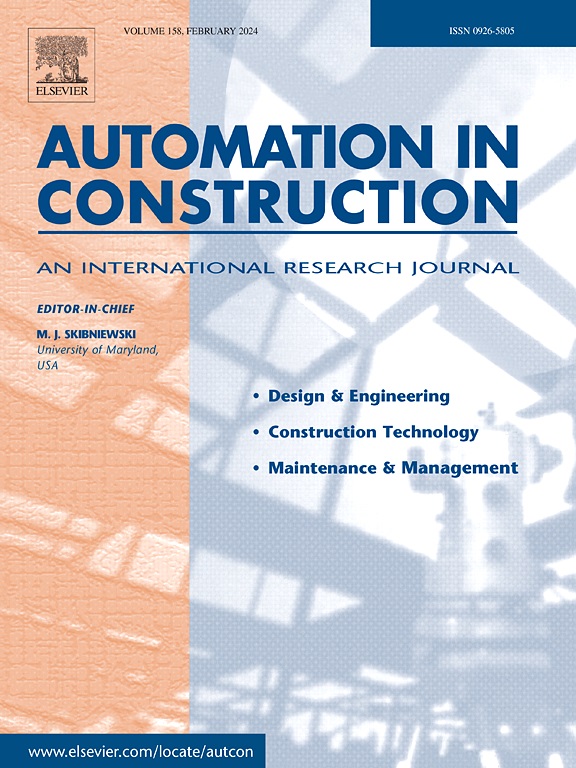密集都市区建筑形态的数据驱动生成式情境设计模型
IF 11.5
1区 工程技术
Q1 CONSTRUCTION & BUILDING TECHNOLOGY
引用次数: 0
摘要
生成式设计有助于提高设计师创造多样化替代方案的能力。然而,目前的建筑形态生成设计存在两大缺陷。首先,它没有考虑到设计与其背景环境之间的相互作用,尤其是在高密度的大都市地区。其次,它未能利用现有设计中蕴含的现有设计知识。本文旨在开发一种数据驱动的生成设计模型:VmRF,它可以从现有设计中学习,生成合理的、符合实际情况的建筑形态。该模型由一个变异自动编码器(VAE)和一个多变量随机森林(mRF)组成,前者用于将高维建筑形态数据集压缩为低维建筑形态数据集,后者用于识别设计参数与形态模式之间的可解释关系。性能评估表明,VmRF 模型在训练速度和预测适配性方面都具有优势。因此,所提出的模型有助于提高设计效率、创新情境意识以及在建筑形态设计中做出基于证据的决策。本文章由计算机程序翻译,如有差异,请以英文原文为准。
Data-driven generative contextual design model for building morphology in dense metropolitan areas
Generative design has been instrumental in expanding designers' ability to create diverse alternatives. However, the current generative building morphology design presents two broad weaknesses. Firstly, it fails to consider the interaction between a design and its backdrop context, particularly in high-density metropolitan areas. Secondly, it fails to harness existing design knowledge embedded in existing designs. This paper aims to develop a data-driven generative design model: VmRF, which can learn from existing designs and generate plausible and contextual building morphologies. The model consists of a variational autoencoder (VAE) to compress high-dimensional building morphology datasets into low-dimensional building morphology datasets and a multivariate random forest (mRF) to identify explainable relationships between design parameters and morphology patterns. Performance evaluation shows the superiority of the VmRF model in terms of training speed and prediction fitness. Consequently, the proposed model promotes enhanced design efficiency, innovation in contextual awareness, and evidence-based decision-making in building morphology design.
求助全文
通过发布文献求助,成功后即可免费获取论文全文。
去求助
来源期刊

Automation in Construction
工程技术-工程:土木
CiteScore
19.20
自引率
16.50%
发文量
563
审稿时长
8.5 months
期刊介绍:
Automation in Construction is an international journal that focuses on publishing original research papers related to the use of Information Technologies in various aspects of the construction industry. The journal covers topics such as design, engineering, construction technologies, and the maintenance and management of constructed facilities.
The scope of Automation in Construction is extensive and covers all stages of the construction life cycle. This includes initial planning and design, construction of the facility, operation and maintenance, as well as the eventual dismantling and recycling of buildings and engineering structures.
 求助内容:
求助内容: 应助结果提醒方式:
应助结果提醒方式:


